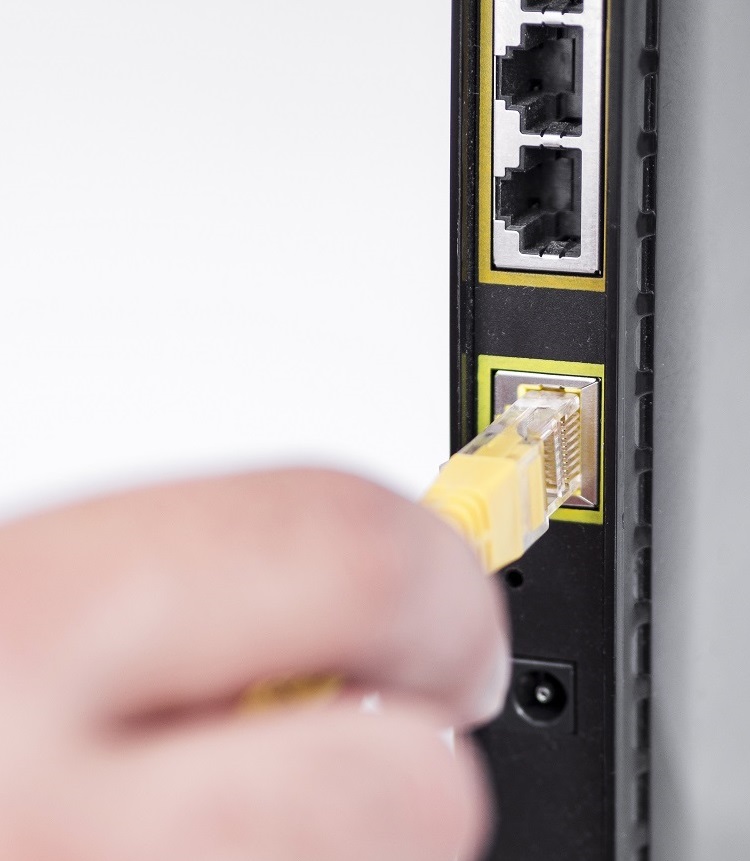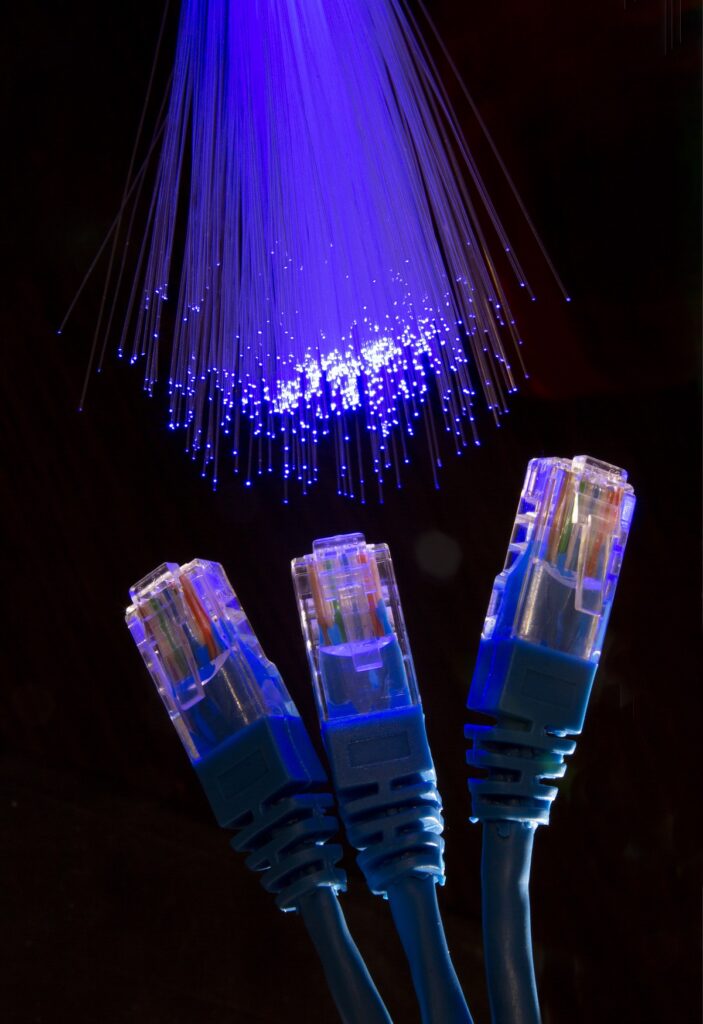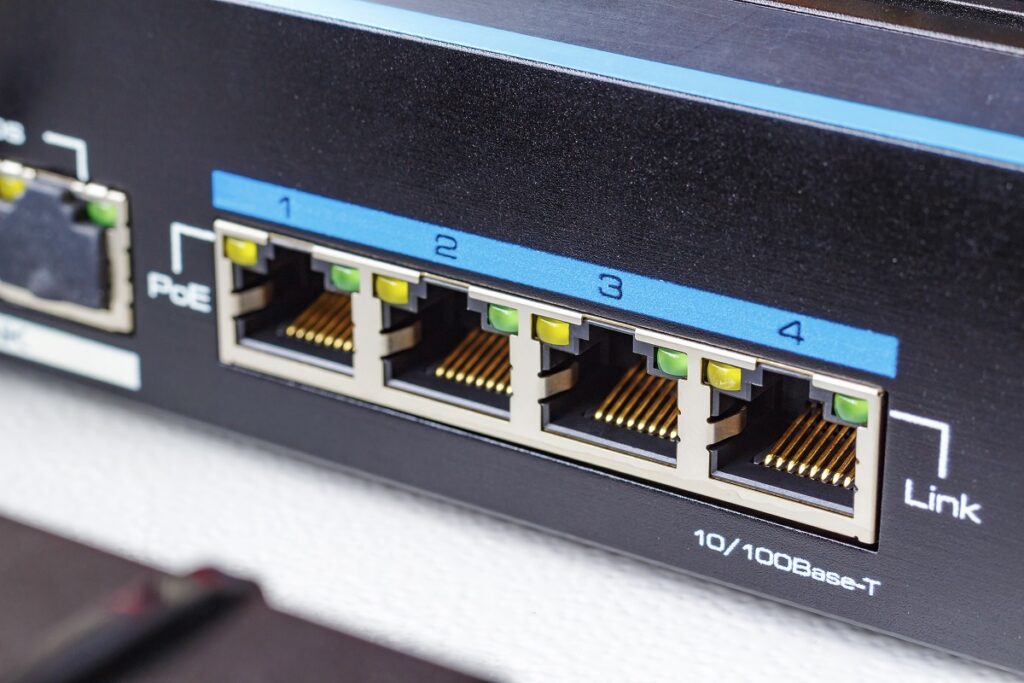Power Over Ethernet: How it’s Transforming Smart Homes and IoT Devices


Power over Ethernet (PoE) has been a game-changer in the world of connectivity, enabling the transfer of both data and electricity through a single cable. This revolutionary technology has simplified the installation and operation of various devices, including IP intercom systems. In this article, we’ll delve into the world of PoE, exploring its history, benefits, standards, terminology, and more, while highlighting its essential role in IP intercom systems like BAS-IP.
Table of Contents
What Is Power over Ethernet (PoE)?
Power over Ethernet (PoE) is a groundbreaking technology that allows the transmission of both electrical power and data through a single Ethernet cable. This innovation eliminates the need for separate power sources, simplifying the installation and operation of various network devices. PoE is particularly valuable in the realm of IP intercom systems, as it streamlines the process of setting up and managing communication systems for businesses and homes alike.
History of Power over Ethernet
The concept of PoE first emerged in the late 1990s, with the initial standard (IEEE 802.3af) being introduced in 2003. This standard allowed for the delivery of up to 15.4 watts of power per port. In 2009, the IEEE 802.3at standard, commonly referred to as PoE+, was introduced, increasing the maximum power output to 30 watts per port. Since then, the technology has continued to evolve, with newer standards such as IEEE 802.3bt (PoE++) delivering up to 60 or even 100 watts of power.
Benefits of Power over Ethernet
Simplified Installation
PoE significantly simplifies the installation of devices, as it eliminates the need for separate power and data cables. This results in reduced labor costs, less clutter, and a faster setup process.

Cost-Effective
By reducing the number of cables and power supplies needed, PoE cuts down on material and installation costs. Additionally, PoE-enabled devices can be centrally powered, making it easier to manage energy consumption and reducing overall energy costs.
Scalability and Flexibility
PoE allows for easier scaling of devices and systems, as adding new devices to the network is as simple as connecting an Ethernet cable. This flexibility enables businesses and homeowners to expand and adapt their systems as needed.
Enhanced Safety
With PoE, there is no need for separate electrical outlets, reducing the risk of electrical accidents. Furthermore, PoE systems can be easily monitored and managed, ensuring a safer and more reliable power source for devices.
Standards Development
PoE standards have evolved over the years to accommodate the increasing power demands of modern devices. The IEEE 802.3af, 802.3at, and 802.3bt standards have successively raised the maximum power output per port to meet these needs, ensuring that PoE remains a cutting-edge technology capable of supporting a wide range of devices.
| PoE Standard | Max Power Output | Voltage Range | Compatible Cable Categories |
|---|---|---|---|
| IEEE 802.3af (PoE) | 15.4 W | 44 – 57 V | Cat 5e, Cat 6, Cat 6a, Cat 7 |
| IEEE 802.3at (PoE+) | 30 W | 44 – 57 V | Cat 5e, Cat 6, Cat 6a, Cat 7 |
| IEEE 802.3bt (PoE++) | 60-100 W | 44 – 57 V | Cat 6, Cat 6a, Cat 7 |
POE Terminology
PSE (Power Sourcing Equipment)
PSE refers to devices that provide power over Ethernet cables. Common examples include network switches and PoE injectors.

PD (Powered Device)
PDs are the devices that receive power through the Ethernet cable. Examples include IP cameras, access points, and IP intercom systems.
PoE Injector
A PoE injector is a device that adds power to an Ethernet cable, enabling the transmission of both data and electricity over the same cable. This is particularly useful for upgrading non-PoE network switches to support PoE devices.
Cable Considerations
When using PoE, it is crucial to select the appropriate cable type for your installation. There are four primary categories of Ethernet cables:
- Cat 5e: Offers a bandwidth of 100 MHz and supports data rates up to 1 Gbps. It is suitable for most PoE installations, including those using IEEE 802.3af and 802.3at standards.
- Cat 6: With a bandwidth of 250 MHz, Cat 6 cables can support data rates up to 10 Gbps over short distances. They are compatible with IEEE 802.3af, 802.3at, and some 802.3bt installations.
- Cat 6a: Provides a bandwidth of 500 MHz and supports data rates up to 10 Gbps over longer distances. Cat 6a cables are ideal for high-performance PoE installations, including those using the IEEE 802.3bt standard.
- Cat 7: Offering a bandwidth of 600 MHz, Cat 7 cables can support data rates up to 10 Gbps over even longer distances. These cables are best suited for cutting-edge PoE installations, such as those utilizing the latest IEEE 802.3bt standard.
| Ethernet Cable Category | Bandwidth | Max Data Rate | Suitable PoE Standards |
|---|---|---|---|
| Cat 5e | 100 MHz | 1 Gbps | IEEE 802.3af, 802.3at |
| Cat 6 | 250 MHz | 10 Gbps (short distances) | IEEE 802.3af, 802.3at, some 802.3bt |
| Cat 6a | 500 MHz | 10 Gbps | IEEE 802.3af, 802.3at, 802.3bt |
| Cat 7 | 600 MHz | 10 Gbps | IEEE 802.3af, 802.3at, 802.3bt |
PoE Specification (Voltage, Range)
PoE systems typically operate within a low voltage range of 44 to 57 volts, with most devices requiring between 48 and 54 volts. The maximum power transmission range for PoE is approximately 100 meters (328 feet) when using standard Ethernet cables. However, this range can be extended using PoE extenders or by connecting multiple PoE switches in a row.
Features and Integration
PoE technology offers numerous features that can be easily integrated into existing networks and systems. These features include:
- Auto-negotiation: PoE devices automatically negotiate power requirements, ensuring that the correct amount of power is delivered to each device.
- Power management: PoE systems allow for centralized power management, making it easier to monitor and control energy consumption.
- Surge protection: Many PoE devices include built-in surge protection, safeguarding your equipment from potential damage caused by electrical surges.
- Hot-swappable: PoE-enabled devices can be easily added or removed from the network without interrupting the system’s operation.
Use Cases, Powering Devices
PoE technology has been widely adopted in various industries and applications, including:
- IP Intercom Systems: PoE is an essential part of any IP intercom system, such as BAS-IP, as it simplifies the installation and management of these communication systems.
- IP Cameras: Security cameras can be easily powered and connected to networks using PoE, allowing for streamlined surveillance systems.
- Wireless Access Points: PoE enables the efficient installation and management of Wi-Fi access points, ensuring seamless wireless connectivity throughout a building.
- VoIP Phones: By powering VoIP phones using PoE, businesses can save on installation costs and streamline their communication infrastructure.
- IoT Devices: PoE technology is increasingly being used to power various IoT devices, such as sensors and smart lighting systems.
Frequently Asked Questions (FAQs)
Conclusion
Power over Ethernet (PoE) has revolutionized the way we power and connect devices. Its numerous benefits, such as simplified installation, cost-effectiveness, and enhanced safety, make it a valuable technology in today’s interconnected world. PoE plays a critical role in IP intercom systems like BAS-IP, where it simplifies the setup and management of communication networks. By understanding the history, standards, terminology, and use cases of PoE, we can better appreciate its impact and potential for further innovation. As the demand for smart devices and seamless connectivity continues to grow, PoE will undoubtedly remain an essential technology, driving the evolution of communication systems and empowering the devices that keep us connected.